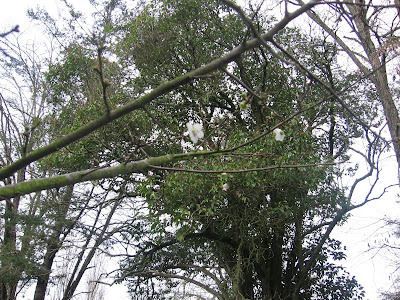
We are finally getting some bloom in our own backyard -- several weeks after the neighborhood streets began to get festive with the new season. Perhaps we don't have quite enough southern exposure to allow for Valentine's Day blossoms. But the plum trees are making up for lost time, decked out in their dainty finery.
Overall, February is a back-and-forth month, mostly chilly, foggy, and rainy with a few glorious breakthrough days. Katherine Grace Endicott's Northern California Gardening gets it mostly right for our little niche: "February is a month of heavy rain and freezing temperatures in much of Northern California. The weather does not beckon gardeners outdoors. There are, however, usually one or two days of false spring -- days so gloriously bright and unseasonably warm that thoughts turn quickly to the garden."
We've certainly had the rain, if not the freezing temperatures. And we've had the glorious day or two of brightness and warmth that didn't seem false at all, and beckoned me right outside to plant a bed or two and admire whatever is in bloom.

The periwinkles are showing a bit of blue.

So are the forget-me-nots.

The arugula is growing like the weed that it is and starting to show off its white blossoms. It's still good for salads, though.




































